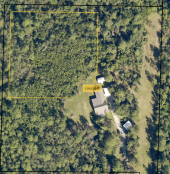I have lived all over the world and hot is hot. It was hot in the Pacific, hot in West Texas, Hot in Afghanistan (and cold), hot in Iraq (also gets cold!) and hot in Florida. The humidity just makes it suck more. I love Florida AKA Lower Alabama BTW.
I did some math and as much as I don't want to agree because building a geothermal cooling system to maximize panel production is really cool because I am a nerd like that...It does seem easier to just replace a couple of panels every 10 years to make up for the rate of decay. So if someone didn't have the ability to keep their panels at cooler temps via a liquid heat exchange system, then panel swapping would work to maintain power production with the understanding that it comes with a cost and it isn't very difficult in most cases.
On the other side of that coin, if we had the ability to keep panels cool via geo thermal heat exchange and it were cost effective (DIY in my case and for most people installing panels on their roof isn't), we could expect only a 15% loss of power production at the 50 year mark. Thats an annual loss of .025% vs .05%. This is assuming there is enough ground loop or well distance to actually pull heat off the panels and keep them closer to standard testing conditions (77F/25C). That is a boat load of heat exchange considering how hot panels get, but if done properly it would work.
There are studies that show the rate of decay of panels in standard atmospheric conditions which is .5% - .8% per year and it is caused by multiple factors, heat being one of the largest ones. So reduce the heat, reduce cell fracturing, panels last longer. Again, this is assuming there is enough ground loop to achieve appropriate heat exchange. Does power production go up by keeping them cool, yes but the objective is max power output over time/reducing the rate of decay. Not just more power.
In conclusion, I think the question to ask is how much does it cost initially to setup a cooling system vs panel swapping every ten years. Keep in mind, the price of solar panels will only go higher with time. IMO, a solar power system that requires zero maintenance over 50 years (excluding inverters and batteries biting the dust), thats a pretty good deal.




